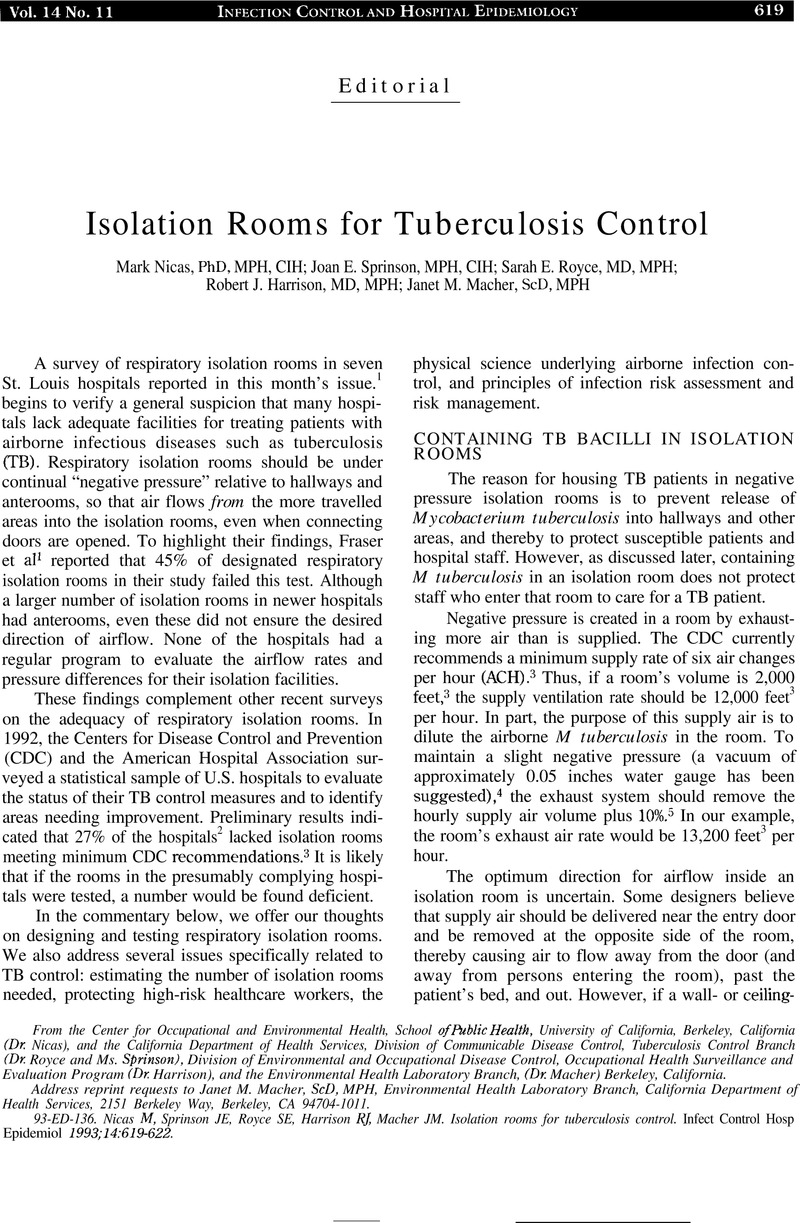Crossref Citations
This article has been cited by the following publications. This list is generated based on data provided by Crossref.
Nicas, Mark
1995.
Respiratory protection and the risk of Mycobacterium tuberculosis infection.
American Journal of Industrial Medicine,
Vol. 27,
Issue. 3,
p.
317.
Nicas, Mark
1996.
An Analytical Framework for Relating Dose, Risk, and Incidence: An Application to Occupational Tuberculosis Infection.
Risk Analysis,
Vol. 16,
Issue. 4,
p.
527.



